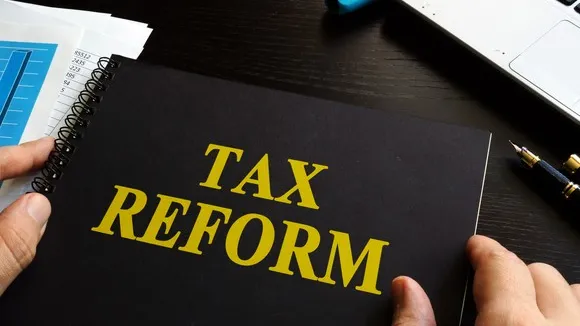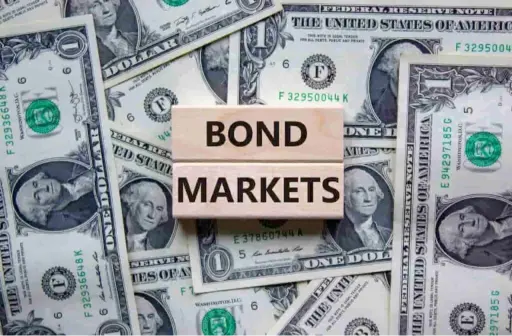Federal Reserve's Interest Rate Hikes: What It Means for Investors

The Federal Reserve has once again raised interest rates as part of its ongoing efforts to combat inflation and stabilize the U.S. economy. The latest rate hikes are the result of the Fed’s continued strategy of tightening monetary policy to address inflationary pressures that have remained stubbornly high in recent years. For investors, these rate hikes are critical to understanding the evolving landscape of financial markets. As borrowing costs increase, there are ripple effects that touch nearly every part of the economy.
The Federal Reserve’s Role and Rate Hikes
The Federal Reserve (Fed) plays a pivotal role in the U.S. economy by setting interest rates that influence everything from consumer borrowing to business investments. The federal funds rate, which is the rate at which banks lend to one another overnight, is the tool the Fed uses to manage economic growth, inflation, and employment.
When the economy is growing too quickly, and inflation is rising, the Fed may raise interest rates to cool things down. Conversely, when the economy is slowing, and inflation is low, the Fed may lower rates to stimulate borrowing and spending. The recent decision to hike rates is a response to inflationary pressures that have persisted throughout the economy.
How Higher Interest Rates Impact Different Asset Classes
1. Stock Market
The stock market typically reacts negatively to interest rate hikes, especially in the short term. Higher interest rates mean higher borrowing costs for companies, which can lead to reduced profitability. Companies that rely on debt to finance growth, such as those in the tech sector, may face higher costs of capital, which can weigh down their stock prices. Additionally, the higher yield on bonds may make them more attractive relative to stocks, causing investors to shift capital away from equities.
-
Growth stocks: Sectors like technology and biotech, which depend on borrowing for expansion, are often hit harder by rate hikes as their future earnings are discounted more heavily at higher interest rates.
Dividend stocks: On the flip side, dividend-paying stocks may become more attractive in a rising rate environment because their yield becomes more competitive with other fixed-income investments.
2. Bond Market
The bond market is perhaps the most directly affected by interest rate hikes. As rates rise, the yield on new bonds increases, making them more attractive compared to existing bonds with lower yields. The value of existing bonds with fixed interest payments declines as a result.
-
Short-term bonds: Short-term bonds tend to be less sensitive to rate changes, but investors may still face some volatility if the Fed continues to raise rates.
Long-term bonds: Long-term bonds are more sensitive to rate hikes. For example, Treasury bonds and corporate bonds may lose value as their fixed interest payments become less attractive relative to new bonds issued at higher rates.
Inflation-linked bonds: TIPS (Treasury Inflation-Protected Securities) could also benefit in an environment of rising rates if inflation concerns persist, as these bonds are designed to protect investors from inflationary pressures.
3. Real Estate
Real estate is another sector that can be significantly impacted by rising interest rates. Higher borrowing costs translate into higher mortgage rates, which can dampen demand for home purchases and commercial real estate investments. As mortgage rates rise, consumers may become less willing to take on large amounts of debt, leading to a slowdown in the housing market.
-
Home buyers: Rising rates make homeownership less affordable for many buyers, which can lead to a slowdown in housing price appreciation. In some areas, we may even see home prices decline if interest rates continue to rise.
Real estate investment trusts (REITs): REITs, which are highly sensitive to interest rates, could see their stock prices fall as borrowing costs increase. REITs rely on cheap debt to finance acquisitions and development projects, and higher rates could reduce their profitability.
4. Commodities and Gold
Commodities like gold, oil, and agricultural products can also feel the impact of rising interest rates. When the Fed raises rates, the U.S. dollar tends to strengthen, making commodities priced in dollars more expensive for foreign buyers. This can lead to a decline in commodity prices in global markets.
-
Gold: Traditionally, gold is seen as a hedge against inflation and a safe haven in times of economic uncertainty. However, rising interest rates make holding gold less attractive because it does not generate income like bonds or dividend-paying stocks.
Oil: Oil prices can be indirectly affected by higher interest rates because they often result in a stronger dollar, which can reduce demand in countries that rely on the U.S. dollar to purchase crude oil.
5. Currency Market
The foreign exchange (FX) market can experience significant volatility in response to changes in interest rates. When the Fed raises rates, it typically causes the U.S. dollar to appreciate, as investors seek higher yields on dollar-denominated assets.
-
U.S. Dollar: As the dollar strengthens, it can make U.S. exports more expensive for foreign buyers, potentially reducing demand for goods and services.
Emerging Markets: Emerging market economies often rely on foreign capital inflows to finance their growth. A stronger dollar can lead to capital outflows from these markets as investors move their capital to the U.S. to take advantage of higher rates. This can lead to currency depreciation and increased inflationary pressures in these countries.
What Should Investors Do in a Rising Rate Environment?
While rising interest rates pose challenges for certain asset classes, there are strategies that investors can consider to manage the impact.
1. Focus on Shorter Duration Bonds
In a rising rate environment, short-duration bonds tend to be less impacted by rate hikes than long-term bonds. Investors may want to adjust their portfolios by shifting towards bonds with shorter maturities to reduce interest rate risk.
2. Consider Dividend-Paying Stocks
As interest rates rise, dividend stocks can become an attractive option, especially those in defensive sectors like utilities, consumer staples, and healthcare. These stocks may offer more stability and income during periods of volatility.
3. Look for Inflation Hedges
Inflation-linked securities like TIPS can help protect against rising costs, while commodities like gold may offer a safe haven if inflation expectations increase.
4. Diversify Across Asset Classes
Diversification remains a key strategy for investors navigating periods of rising rates. By holding a mix of stocks, bonds, real estate, and commodities, investors can reduce risk and potentially capture opportunities across different market conditions.
MOST READ ON BOSTONGLOBE.COM
- Tech Sector Growth Amid Rising Inflation Concerns
- Inflation Reduction Act: How It’s Shaping Future Investments and Financial Policies
- S&P 500 Hits Record High: What’s Driving the Rally in 2025
- US Dollar Strengths and Weaknesses: Impact on Global Trade and Inflation
- Biden’s Economic Agenda: What It Means for Corporate Taxes and Investments
- Stock Market Reacts to Latest Economic Data and Fed Policy Announcements
- Why Annuity Owners Value Lifetime Income Security








